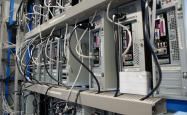新能源汽车工程设计
Title: Designing a Curriculum for New Energy Water Pumps
Introduction
In recent years, the adoption of new energy sources has gained significant traction in various industries, including the water pump sector. Designing a comprehensive curriculum for new energy water pumps requires a multidisciplinary approach, integrating knowledge from engineering, renewable energy technologies, fluid mechanics, and sustainable development principles. This curriculum aims to equip students with the necessary skills and knowledge to address the growing demand for efficient, ecofriendly water pumping systems. Here's a structured outline for designing such a curriculum:
1. Fundamentals of New Energy Sources
Overview of renewable energy sources (solar, wind, hydro, etc.)
Principles of energy conversion and storage
Introduction to the concept of new energy water pumps
2. Fluid Mechanics and Hydraulics
Basic principles of fluid mechanics
Hydraulic systems and components
Pump performance characteristics and efficiency analysis
Design considerations for various pump types (centrifugal, positive displacement, etc.)
3. Renewable Energy Technologies
Solar energy fundamentals and applications in water pumping
Wind energy systems for water pumping
Hydroelectric systems and their integration with water pumps
Geothermal and biomass energy applications
4. Design and Optimization of New Energy Water Pumps
System design considerations and requirements
Selection of appropriate pump types based on application and energy source
Integration of renewable energy sources with water pump systems
Performance optimization techniques for enhanced efficiency and reliability
5. Control Systems and Automation
Introduction to control theory
Automation techniques for optimizing pump operation
Monitoring and maintenance strategies for sustainable performance
6. Environmental and Economic Aspects

Environmental impacts of water pumping systems
Life cycle assessment and sustainability considerations
Costbenefit analysis of new energy water pump installations
Regulatory and policy frameworks governing renewable energy usage in water pumping
7. Case Studies and Practical Applications
Realworld examples of successful new energy water pump installations
Case studies illustrating design challenges and solutions
Handson projects and simulations to reinforce learning
8. Emerging Trends and Future Directions
Innovations in new energy water pump technologies
Potential research areas for further advancement
Market trends and opportunities in the renewable energy water pump sector
Conclusion
Designing a curriculum for new energy water pumps requires a holistic approach that encompasses theoretical knowledge, practical skills, and awareness of environmental and economic considerations. By providing students with a solid foundation in renewable energy technologies, fluid mechanics, and system design principles, this curriculum aims to prepare future professionals to drive innovation and sustainability in the water pumping industry.
References:
Insert relevant references and resources here.
1.本站遵循行业规范,任何转载的稿件都会明确标注作者和来源;2.本站的原创文章,请转载时务必注明文章作者和来源,不尊重原创的行为我们将追究责任;3.作者投稿可能会经我们编辑修改或补充。









